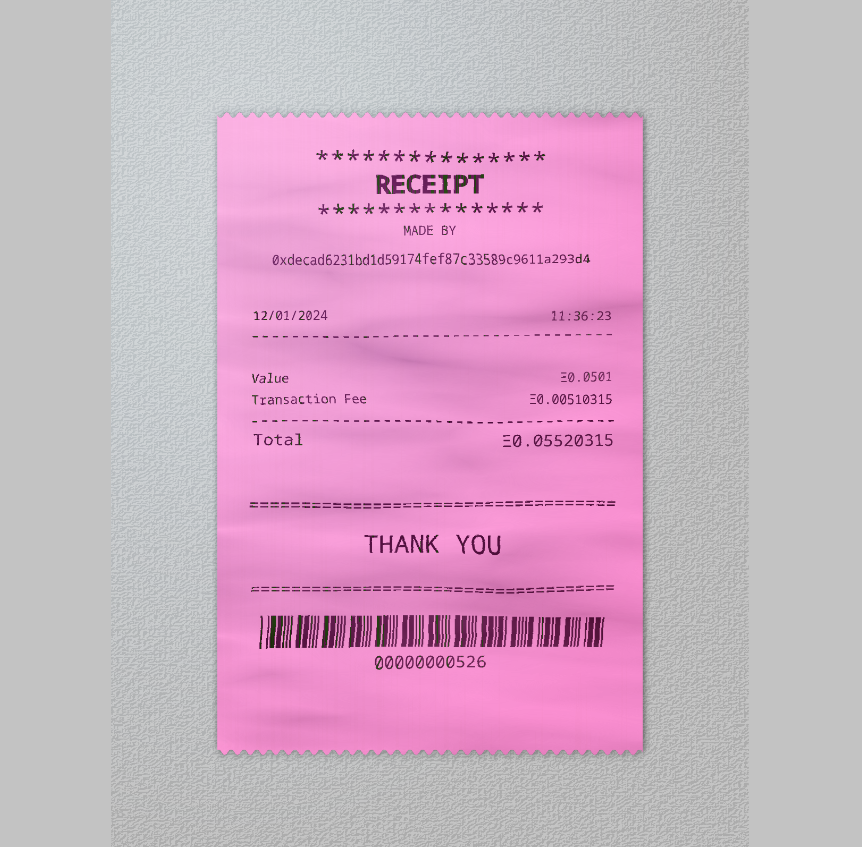TADAA: Talking About Digital Artistic Assets
In search for meaning, I started delving into art in 2021. It coincided with my growing interest in digital ownership and blockchain collectibles. In the summer of 2022, I learned about the social initiative Art for Care. It consisted of a guide from S.M.A.K. (museum for modern art in Gent) visiting a hospital “with a suitcase full of carefully selected works of art” in order to deliver a unique experience to patients. Art for Care inspired me to wonder if I could do something similar with digital art, accessed by a computer instead of physical art in a suitcase. Although I am far from an expert, I know a thing or two about art and maybe that would actually be enough to emulate Art for Care…
Digital Artistic Assets
When using the term “digital”, I intend to qualify both the artistic and the asset component. So, I want to focus on digital creativity that is digitally ownable. Digital art is not new and almost as old as modern computers (see timeline lerandom), but reliable digital assets are relatively young.
I understand an asset as an ownable thing with possible (economic) value (see Merriam-Webster and Investopedia). For individuals some regular assets are a house, stocks and jewelry. Obviously, a physical art piece, like a Picasso painting, is an asset. Less straightforwardly but an accepted practice in traditional art, a conceptual art piece, like a wall drawing from Sol Lewitt, can be owned by means of a physical, paper certificate (see artprice). From here on, it only requires a small mental leap to consider digital, blockchain certificates assets too.
The ownership of digital certificates should ideally be enabled by blockchain networks. They offer decentrally maintained ledgers that are publicly readable and privately writable ensuring the scarcity of assets and exclusive access of owners. Chris Dixon argues that blockchains are better understood as a new class of computers, inverting the “hardware-software power relationship” (see his book Read Write Own). The software governs a network of hardware devices, rather than hardware controlling the software. This way, it is not the capricious owners of hardware who determine digital ownership, but inviolable rules in software are establishing digital assets.
In order to better understand the importance of blockchain for art, I want to emphasize the divide or distance between the asset and art component. This distance is continuous in nature, but interpreting it categorically allows us to better organize “art on the blockchain”. In the first category, a clear divide appears between the asset and the art component, as in a blockchain token pointing to an external hypermedia file (see Jacob Horne on hypermedia and cryptomedia). In the second category, the distance between the art and asset component diminishes or disappears completely, so that the blockchain nature is part of the art. The former facilitates ownership of existing digital art and the latter improves upon art or makes new art forms possible. Although both categories of art are digitally collectible by blockchain (cryptomedia), you could, artistically speaking, call them hypermedia and blockchain art respectively (see examples below from my personal collection).
GM Everyone from Deekay, part of the The Memes collection. The artistic thing is an animation, to which a blockchain token refers, and therefore a clear divide exists between the asset and art component (hypermedia art).
Polychrome Music from Rafael Roozendaal and Danny Wolfers, part of the Art Blocks collection. The artistic thing is a script and the results generated with it. Altough generative art is not new, blockchain improves this art type by reliably registering the script and a random seed to enable verifying the result (rather blockchain art).
Mission
Why would I like to talk about these digital artistic assets? Because for many people it could mean an undiscovered treasure trove of cultural realizations. In general, I want to share my digital art passion with others to ignite some appreciation for it and curiosity in them. In particular, I want to introduce others to the realm of digital art and hand them the means to further explore on their own.
Public
Everyone interested in art or digital technology can benefit from learning about digital art. For the latter, this is in part because, not rarely, creations by artists precede real life use cases as a proof of concept.
In addition and in line with Art for Care, it is remarkably benevolent to target patients in hospitals etc. Digital art can be experienced anywhere by means of a computer and internet connection. This is not necessarily the case for all digital art, although the blockchain ethos of transparency usually not only applies to clarity of ownership (asset component), but also to digital art being publicly available (art component). Therefore, the threshold to enjoy digital art is minimal and it lacks the conventional barriers to experience physical art, especially a concern for people struggling with health issues.
Projects
- In the MoMA pixel art workshop we enabled children from a local hospital to make pixel art along the lines of the postcard exhibition from MoMA (Museum of Modern Art in New York).

